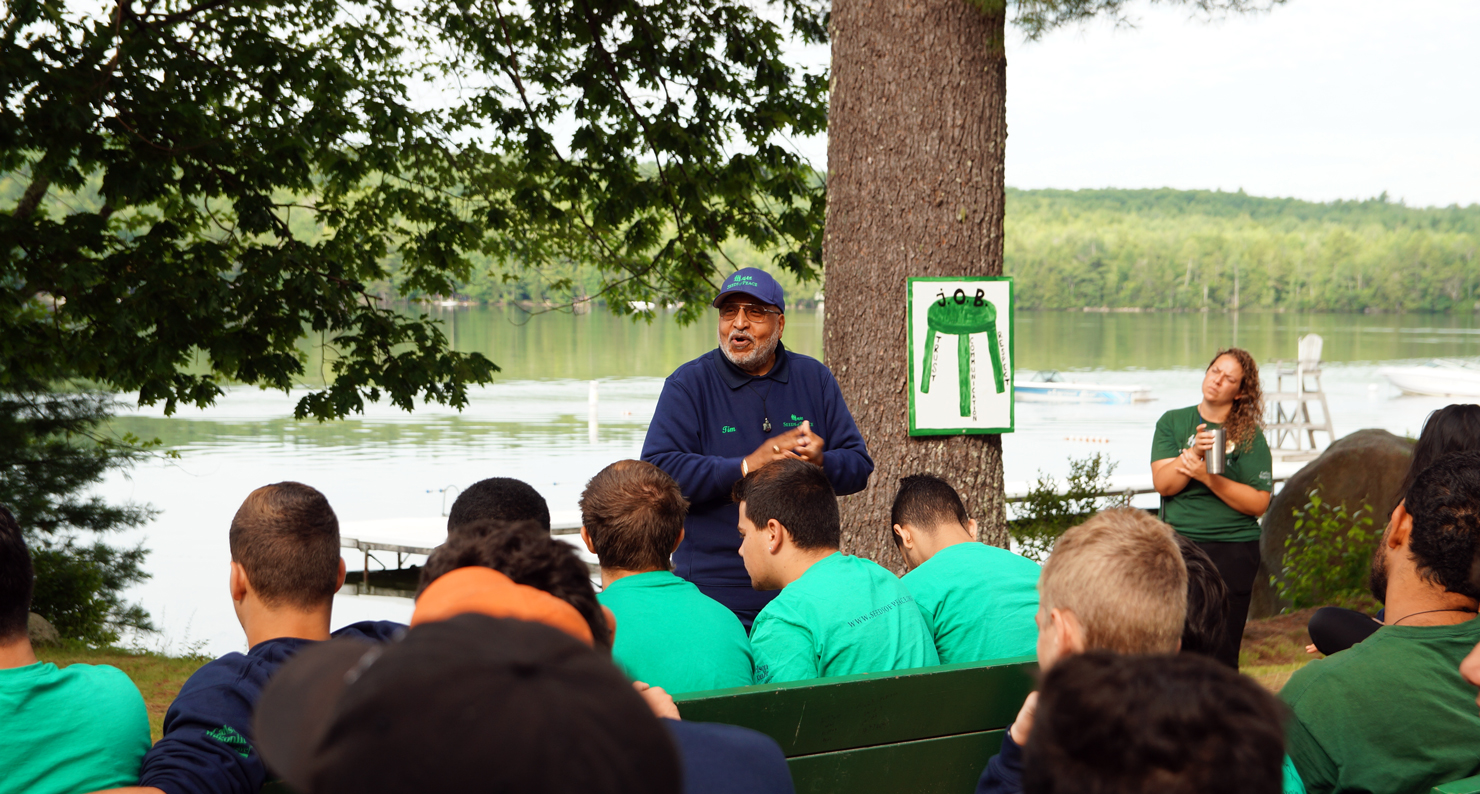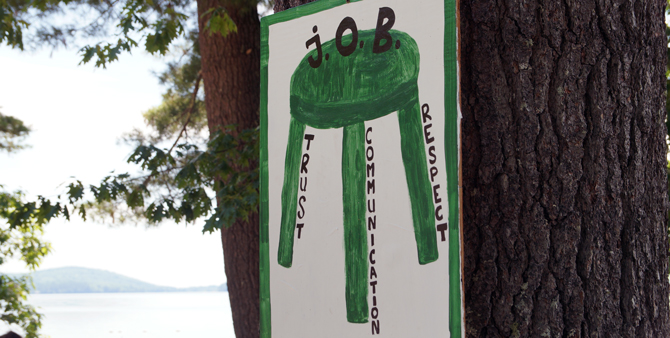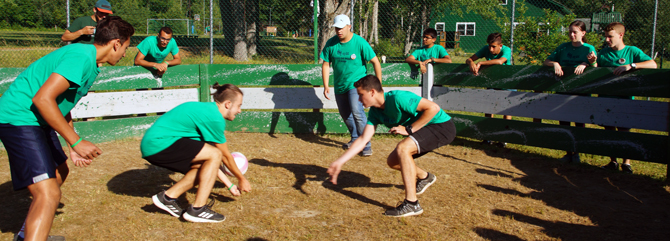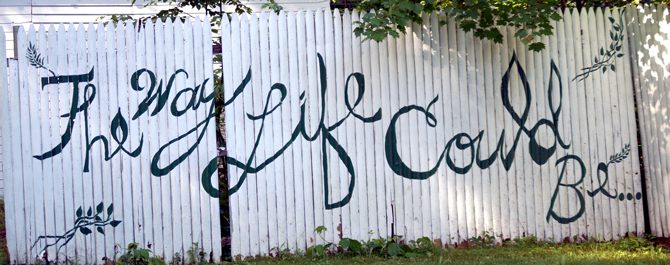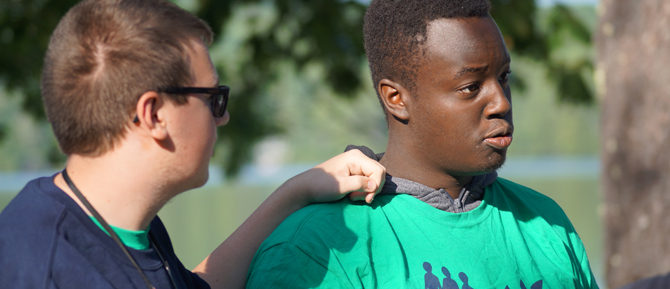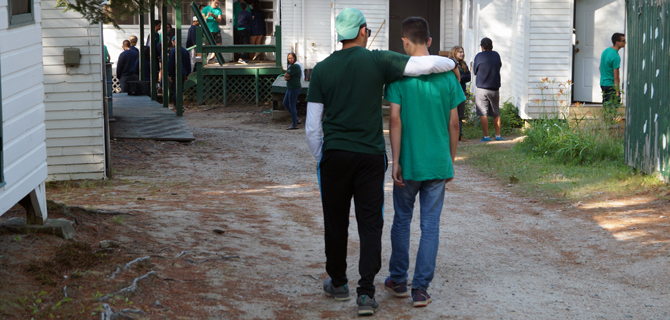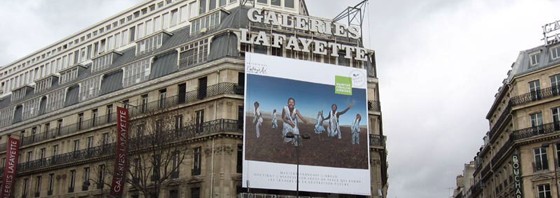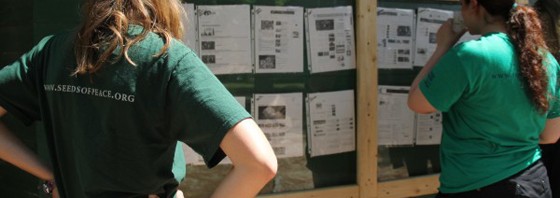Seeds of Peace has been running a Camp program in Otisfield, Maine for 27 years. The COVID-19 pandemic continues to pose new challenges. This means that the location and structure of our programs will look a little bit different in Summer 2021.
At its core, Seeds of Peace develops courageous leaders to work in solidarity across lines of difference to create more just and inclusive societies. This mission will be reflected in all of our programs in summer 2021, whether they are in Maine, Jerusalem, Cairo, or over Zoom.
Regardless of location, duration, or program title, all of our participants will experience a rigorous leadership development program that is rooted in dialogue, community, leadership skills-building, and action-taking.
Through dialogue across lines of difference, participants make systems of power personal by connecting an individual’s experiences to the larger structures and patterns of power that they are nested in.
Through inviting youth and educators into the Seeds of Peace community, we are giving them the opportunity to engage meaningfully with other young people they might otherwise never have the chance to meet.
By teaching the leadership skills critical for affecting change, we are preparing youth and educators to take on leadership roles and tackle real-world challenges back home.
And with those skills, perspectives, and the solidarity of their Seeds of Peace community that youth and educators will then mobilize to take action for change.
Program Outcomes
When youth complete our leadership programs, they will have a deeper understanding of the problems facing their community, country, and world. They will have the skills to meaningfully participate in and lead efforts aimed at resolving conflicts, addressing urgent issues facing their communities, and promoting a more just and inclusive societies.
Who can participate?
High School students and educators are eligible for the following summer program opportunities. Please pay close attention to the location, as well as the grade level and other eligibility requirements for each program. We are also looking to recruit Camp staff over the age of 20 and educators who live in the Northeast United States.
United States
In the United States, we are planning for both virtual and in-person options.
Apply to the 2021 United States Summer Program (including Camp) ››
Youth at Camp
Because of COVID-19 restrictions, Camp applications will be open to youth in 9th and 10th grades living in two distinct regions around the Northeastern United States:
Session I: July 11-28 for campers from the greater Boston area (including Vermont and New Hampshire), the greater New York City area (including New York City, New Jersey, and Connecticut), and Syracuse. Cost: $3,000.
Session II: August 1-18 for campers from Maine. Cost: $2,000.
Educators at Camp
Work with youth in the US Northeast? Interested in participating in the educators’ program at Camp? Learn more and apply now ››
Staff at Camp
Live in the Northeast United States? Interested in working at Seeds of Peace this summer? Applications for Counselors (including Lifeguards, Activity Specialists, Camper Support Staff) and Facilitators are now open››
Middle East, South Asia, and Europe
Our staff is working to plan local programs for youth in Egypt, Jordan, Israel, Palestine, India, Pakistan, the United Kingdom, and France.
Apply to the 2021 Palestinian Summer Program ››
Apply to the 2021 Egyptian Summer Program ››
Apply to the 2021 Israeli Summer Program ››
Apply to the 2021 Jordanian Summer Program ››
Stay connected
To receive the most up to date information, subscribe to the Seeds of Peace newsletter ››
We look forward to sharing more program details with you over the next few months. Our hope is to release applications for all summer opportunities by mid-March.
If you have questions and would like to be connected to the Program Director in your country or region, please email info@seedsofpeace.org.


